- Home
- Scott Turow
Ultimate Punishment Page 12
Ultimate Punishment Read online
Page 12
“Death is different”: The saying is a paraphrase of Justice Stewart’s remark in Woodson v. North Carolina, 428 U.S. 280, 303–4 (1976), where he stated that “death is a punishment different from all other sanctions in kind rather than degree.”
four…persons…ultimately exonerated: For an article tracking what happened to those whose lives Furman spared, see J. Marquart and J. Sorensen, “A National Study of Furman-Commuted Prisoners: Assessing the Threat to Society from Capital Offenders,” reprinted in The Death Penalty in America, p. 164.
bravest advocates of capital punishment: William Kunkle, the former First Assistant State’s Attorney in Chicago, is one such death penalty proponent willing to take this position.
murder rate in…United States…four times…European Union: The murder rates cited come from a document on the Web site of the British Home Office, G. Barclay, C. Tavares, A. Siddique, “International Comparisons of Criminal Justice Statistics 1999,” Home Office Bulletin, Issue 6/01, May 2001, posted at http://www.home office.gov.uk/rds/pdfs/hosb601.pdf. Other data is collected at http://www.angelfire.com/rnb/y/homicide.htm#murd.
not fair that Europeans judge us: Tending to prove that Europeans get as angry as Americans in the face of crime is the French election of 2002, when a rise in immigrants’ crimes was the cited reason that Lionel Jospin of the Socialists, the traditional opponents of the ruling Gaulists, didn’t make the runoffs for French President. Instead, Jospin was outpolled by Jean-Marie Le Pen, who probably would have been comfortable with a klaxon and bedsheet in the American South of the 1930s. See, for example, “Shock Success for French Far Right,” http://news.bbc.co.uk/1/hi/world/europe/1942612.stm.
prosecutors emphasized two different shoeprints: The shoeprint incident, with transcript quotations and citations, is set out at pp. 43–46 of the Hernandez Brief. See Victims, pp. 193–94, detailing how the prosecutors had used the same prints and the same theories to send Cruz to death row.
far smaller woman’s size: A woman’s size-six shoe corresponds to a man’s four or four and a half, a size I’ve yet to see on the shelf of any men’s store. See http://onlineconversion.com/womens_clothing.htm; http://funkefeet.com/funk-shoeSize.html. In Victims, Frisbee and Garrett say that Detective John Sam had been assured in 1983 that these shoeprints had been made by friends of Jeanine’s sister who had run around the house looking for the little girl in the immediate aftermath of her disappearance (Victims, p. 34). The size of the prints, and the women’s tread design positively identified on one of them, obviously fortifies that explanation.
first…trial…reversed: The quotation on the prosecutors’ deliberate misuse of evidence comes from People v. Cruz, 121 Ill. 2d 293, 333, 521, N.E.2d 18 (1988). See also People v. Hernandez, 521 N.E.2d 25.
more inadmissible proof: Cruz II, 162 Ill. 2d at 355–58, details the prosecutors’ impeachment of Irma Rodriquez. “[W]e cannot but conclude that the motivation…was improper,” the Court said. Id. at 363.
jailhouse witnesses…testify they had no deal: Cruz II, 162 Ill. 2d at 328, describes how Robert Turner, a death row informant who’d been a witness against Cruz, testified that Robert Kilander, one of the Cruz trial prosecutors, never said anything to Turner about Kilander’s providing favorable testimony for him. Kilander later testified when Turner was resentenced and acknowledged that before getting on the stand against Cruz, Turner wanted to be certain Kilander would testify, 162 Ill. 2d at 332, which, the Court said, “clearly impugns” Turner’s testimony. Hernandez I, 121 Ill. 2d at 308, recounts an incident at the first Hernandez trial in which Tom Knight, the original prosecutor of these cases, called an Assistant State’s Attorney from a neighboring county as a witness to testify that Marquez received no preferential treatment and that Knight never spoke to the Assistant about that. The neighboring prosecutor was then impeached with the transcript of Marquez’s sentencing, which showed that Knight had in fact requested leniency for Marquez. See also Victims, p. 78.
officer said…he’d actually been in Florida: See Victims, pp. 269–70; M. Possley, “Cruz’s Legal Defense Team Worked for Free, But Not for Nothing—Single Date Cracks the Code of Freedom,” Chicago Tribune, 11/6/95, p. 1.
indictment of seven men: See Victims, pp. 284–85; A. Barnum, T. Gregory, “Impending Indictments in Cruz Scandal Rock DuPage,” Chicago Tribune [DuPage Sports Final], 12/10/96, p. 1; T. Gregory, “DuPage Judge Is Target in Cruz Case,” Chicago Tribune, 12/11/96.
law enforcement officers…acquitted: M. Possley and T. Gregory, “DuPage 5 Win Acquittal,” Chicago Tribune, 6/5/99.
multimillion-dollar settlement: See, e.g., J. Chase, “Angry DuPage Settles Cruz Suits—3 Former Defendants to Split $3.5 Million,” Chicago Tribune [Chicago Sports Final, N Edition], 9/27/00, p. 1; “Acquitted Ill. Men Win Settlement” at http://www.crimelynx.com/cruz.html.
that DNA establishes Dugan’s role with “scientific certainty”: Birkett, who ran for Illinois Attorney General and was chastised for his alleged part in the Cruz/Hernandez case during the campaign, did not disclose the new DNA results concerning Dugan until after he had lost the election. See S. Mills and C. Parsons, “Birkett Clings to Cruz Link in Killing,” Chicago Tribune [North Sports Final Edition], 11/15/02, p. 1. See also “Acquitted Ill. Men Win Settlement” at http://www.crimelynx.com/cruz.html (“ ‘It is morally repugnant to give money to someone we think may have committed this crime,’ Birkett said”).
attempted to strip Ronald Mehling of his position as Presiding Judge: Victims, p. 278; see also A. Barnum, “High Profile Case Judge to Retire,” Chicago Tribune, 6/20/02.
Robert Kilander…now the Chief Judge: A. Barnum, “Kilander Voted County’s Chief Judge,” Chicago Tribune, 1/17/01.
U.S. Supreme Court had ruled…unconstitutional…statement of…impact: Booth v. Maryland, 482 U.S. 496 (1987) ruled victim impact testimony unconstitutional in a capital sentencing hearing.
Court…reversed itself: In Payne v. Tennessee, 501 U.S. 808 (1991), the Court explicitly overruled Booth and concluded that victim impact testimony could permissibly contribute to an assessment of a defendant’s blameworthiness by helping measure the harm of his crime.
Now…victims have a statutory right…to be heard: Chapter 725, Act 120, of the Illinois Compiled Statutes (720 ILCS 120/1) is the Rights of Crime Victims and Witnesses Act. Section 120/4(4) gives victims the right to address the court at sentencing. Other rights protected by the statute include notification of court proceedings, a right to be present or to have a representative present in court, and the right of restitution.
“[M]y 10 year-old daughter”: Citations to Mrs. Larson’s testimony are from the transcript of the 12/13/00 Commission session conducted in Springfield, Illinois.
Laura Tucker: Ms. Tucker appeared before the Commission in Chicago on 8/2/00.
Apprendi v. New Jersey: 530 U.S. 466 (2000).
less than half of one percent had actually been executed: In Illinois, for example, before the moratorium roughly 285 persons had been sentenced to death but only 12 executed. This is not an anomalous result. In his national study, Professor Liebman of Columbia found that as of 1995, across the country more than 5,700 death sentences had been imposed since Furman, but only 313 had been carried out. http://justice.policy.net/jpreport/section7.html#a.
“I thought I would feel satisfied”: Jay Stratton is quoted in M. Pearl, “Dante and the Death Penalty,” Legal Affairs, January—February 2003, p. 38.
survivors only experience more emotional turbulence: J. Diaz, The Execution of a Serial Killer (Poncha Press 2003), p. 130, a fine narrative describing a scholar’s reaction to being a witness at an execution, deals briefly with the slight literature of victims’ post-execution reactions. See also R. J. Lifton, G. Mitchell, Who Owns Death?: Capital Punishment, the American Conscience, and the End of Executions (HarperCollins, 2002), pp. 197–212. Some murder survivors, such as those in Murder Victims’ Families for Reconciliation, insist forthrightly, “Executions are not what will help u
s heal.” See, generally, Murder Victims’ Families for Reconciliation Web site, http://www.mvfr.org/homepage.html.
told reporters…experienced a sense of relief: http://www.cnn.com/2001/LAW/06/11/victims.reax/ describes the reported reaction of many of the survivors who witnessed McVeigh’s execution.
critics may label the survivors’ desire for death “retribution”: For an outstanding discussion of retribution, revenge, and other questions regarding victims in particular and capital punishment in general, see A. Sarat, When the State Kills (Princeton University Press, 2001), pp. 33–59.
Ackerman family…Nicaricos: A. Barnum, “Melissa’s Killer Pleads Guilty, Gets Life,” Chicago Tribune [National Edition], 11/20/85, Section C, p. 1, describes Mr. Ackerman’s reaction to the plea deal. The Nicaricos’ doggedness about the case and their disappointment with Hernandez’s eighty-year sentence, rather than death, is recorded at J. Sjostrom, “Hernandez Gets 80-Year Term in Nicarico Death,” Chicago Tribune [DuPage Sports Final], p. 1. See another article quoted without attribution at http://www.littlest angels.net/Stories229.html.
American law has exalted the jury’s role in capital matters: The Supreme Court’s decision in June 2002, Ring v. Arizona, 536 U.S. 584, effectively granted to every defendant the right to have his fate decided by a jury. That was already the prevailing practice in all but nine states that impose the death penalty. The reason for the jury’s unique prominence in making capital decisions is probably best expressed in the dissent of Justice Stevens in Spaziano v. Florida, 468 U.S. 447, 489–90 (1984), where he said, “If the prosecutor cannot convince a jury that the defendant deserves to die, there is an unjustifiable risk that imposition of that punishment will not reflect the community’s sense of the defendant’s ‘moral guilt.’ ”
better job in providing compassionate services: Report, pp. 192–94, and Technical Appendix, Sections 1B & C, detail issues related to survivors.
“only reason to be for it”: The third presidential debate took place on 10/17/00 at Washington University in St. Louis.
has a murder rate well above the national average: As of March of this year, Texas had executed 299 of the 834 persons put to death in the United States since Gregg reauthorized capital punishment. See P. Kilborn, “Prominent Ex-Judges and Prosecutors Lead Fight Against Milestone Execution Today in Texas,” The New York Times [National Edition], 3/12/03, at A16. A summary of the FBI’s Uniform Crime Reports and the murder rates in all the states from 1995 to 2001 is posted on the Death Penalty Information Web site at http://www.deathpenaltyinfo.org/murderrates.html. As an aside, stereotypes notwithstanding, Texas did not death-sentence more often than average, condemning 15.33 defendants per 1,000 homicides. But Texas executes a far higher percentage of those on death row than the national norms, suggesting that whatever issues exist in Texas have to do with the limitations the state has imposed on judicial review. See Liebman, http://justice.policy.net/jpreport/figure 18.html and http://justice.policy.net/jpreport/texas.pdf. See also National Center for Policy Analysis, “Capital Punishment Rates in Death Penalty States,” 2/15/02, posted at http://www.ncpa.org/iss/cri/2002/pdo21502f.html, and another of Liebman’s reports, James S. Liebman et al., “A Broken System, Part II: Why There Is So Much Error in Capital Cases, and What Can Be Done About It,” University of Columbia Law School, February 2002, posted at http://www.law.columbia.edu/brokensystem2/index2.html. Notably, more than half of Texas’ 254 counties imposed no death sentences during Liebman’s study period, but Harris County, whose seat is Houston, has sent more persons to death row than any other county in America.
consolidated murder rate in states without the death penalty…consistently lower: Regarding state cross-comparisons, see http://www.death penaltyinfo.org/DeterMRates. html; The New York Times, 9/22/00, p. 1. Various studies and statistics regarding deterrence are summarized on the outstanding Web site of the Death Penalty Information Center at http://www.deathpenaltyinfo.org/deter.html - STUDIES.
brutalization effect…proof: See for example, W. Bailey, “Deterrence, Brutalization, and the Death Penalty: Another Examination of Oklahoma’s Return to Capital Punishment,” 36 Criminology, pp. 711–33 (1998), for a disciplined examination of both brutalization and deterrence in Oklahoma’s homicide statistics.
murder rates drop…since 1993: See J. Fox and M. Zawitz, “Homicide Trends in the United States,” United States Department of Justice, Bureau of Justice Statistics, http://www.ojp.usdoj.gov/bjs/homicide/homtrnd.htm.
clearest deterrent effect from executions: Without executions, the death penalty would come to be perceived as an empty threat. The certainty of punishment is key to its effectiveness, according to deterrence theory. W. Bailey and R. Peterson, “Murder, Capital Punishment and Deterrence: A Review of the Literature,” in The Death Penalty in America, p. 140. See the sources discussed in the next several notes for elaboration, including H. Dezhbakhsh et al., “Does Capital Punishment Have a Deterrent Effect? New Evidence from Post Moratorium Panel Data,” January 2001, pp. 20–21, which can be downloaded at http://userwww.service.emory.edu/ñcozden/dezhbakhsh_01_cover.html [hereafter “Dezhbakhsh”]. Dezhbakhsh, pp. 22–23, found a deterrent effect in arrests, sentencings, and executions, but claimed their most robust results were in connection with executions. The claim that arrests produce a deterrent effect, given that the vast majority of arrests do not result in a death sentence, hardly supports capital punishment, as opposed to locking up bad guys.
“studies…yielded…fairly consistent pattern of non-deterrence”: W. Bailey & R. Peterson, “Murder, Capital Punishment and Deterrence,” 50 Journal of Social Issues, p. 53, Summer 1994.
Eighty percent said it did not: M. Radelet and R. Akers, “Deterrence and the Death Penalty: The Views of the Experts,” 87 Journal of Criminal Law and Criminology 1, Fall 1996.
police chiefs…inaccurate to say…death penalty…reduces…homicides: See R. Dieter, “On the Front Line: Law Enforcement Views on the Death Penalty,” posted at http://www.deathpenaltyinfo.org/dpic.ro3.html, which presents the results of the Hart poll.
academic support for deterrence…from free-market economists: E.g., Ehrlich, “The Deterrent Effect of Capital Punishment,” 65 The American Economic Review, pp. 397–417 (1975); H. Dezhbakhsh passim.
Ehrlich’s results…U.S. Supreme Court…reauthorize capital punishment: See Gregg v. Georgia for the Court’s discussion of deterrence. The Court appeared less than fully persuaded, remarking: “Statistical attempts to evaluate the worth of the death penalty as a deterrent to crimes by potential offenders have occasioned a great deal of debate. The results simply have been inconclusive.” 428 U.S. at 184–85. Notwithstanding that judgment, the Court ruled that legislators were within constitutional bounds in finding deterrence a justification for the death penalty.
Ehrlich and his followers have been stingingly criticized: Peck, “The Deterrent Effect of Capital Punishment: Ehrlich and His Critics,” 85 Yale L.J. 359 (1976); Baldus & Cole, “A Comparison of the Work of Thorsten Sellin and Isaac Ehrlich on the Deterrent Effect of Capital Punishment,” 85 Yale L.J. 170 (1975); Bowers & Pierce, “The Illusion of Deterrence in Isaac Ehrlich’s Research on Capital Punishment,” 85 Yale L.J. 187 (1975); W. Bailey and R. Peterson, “Murder, Capital Punishment and Deterrence: A Review of the Literature,” in The Death Penalty in America, pp. 135–61.
A 2001 paper…showed that murders are more prevalent in rural areas: The 2001 study that found an inverse correlation between murder and population density was Dezhbakhsh, p. 21.
Defenders…adhere to the numbers: For example, Dezhbakhsh, pp. 10–12, accepts the proposition that some homicides are not deferrable, acknowledges there’s no verifiable way to categorize which are and which aren’t, and claims, nonetheless, those limitations have no impact on his results.
period between conviction and execution…eleven and a half years: U.S. Department of Justice, Bureau of Justice Statistics Bulletin, December 2001, p. 1, gave the average time between conviction and
execution in 2000 as eleven and a half years.
researchers seem to agree…death penalty is more expensive: A number of cost studies were summarized by the Commission in our Report, pp. 197–99.
new study…costs…death penalty…more: See Report, p. 198, and M. Goodpaster, “Cost Comparison Between a Death Penalty Case and a Case Where the Charge and Conviction Is Life Without Parole,” in Indiana Report, pp. 119–22 F.
amount saved by abolition is small: See Illinois State Budget Update, Fiscal Year 2003, posted at http://www.state.il.us/budget/BudSumm 03.pdf. The Death Penalty Information Center, for example, says: “The most comprehensive study in the country found that the death penalty costs North Carolina $2.16 million per execution over the costs of a non—death penalty murder case with a sentence of imprisonment for life” (Duke University, May 1993). The study referred to, “The Costs of Processing Murder Cases in North Carolina,” is available on line at www.pps.aas.duke.edu/people/faculty/cook/comnc.pdf. Extrapolating, the DPIC says this means that in the United States we’ve spent an extra $1 billion since the death penalty was reestablished in 1976. The number is impressive until one bears in mind that it’s derived over a period of twenty-seven years. Taking the DPIC estimate as correct nonetheless means that on an average basis, we’ve spent less than $40 million per year, with the costs spread over the thirty-eight death penalty states. See http://www.deathpenaltyinfo.org/costs2.html.
Sometimes a crime is so horrible: In reapproving capital punishment, the U.S. Supreme Court, in Gregg v. Georgia, quoted the following from Lord Justice Denning, Master of the Rolls of the Court of Appeal in England: “Punishment is the way in which society expresses its denunciation of wrong doing: and, in order to maintain respect for law, it is essential that the punishment inflicted for grave crimes should adequately reflect the revulsion felt by the great majority of citizens for them. It is a mistake to consider the objects of punishment as being deterrent or reformative or preventive and nothing else…The truth is that some crimes are so outrageous that society insists on adequate punishment, because the wrongdoer deserves it, irrespective of whether it is a deterrent or not.” Royal Commission on Capital Punishment, Minutes of Evidence, 12/1/49, p. 207 (1950); 428 U.S. at 184n.30.

 Testimony
Testimony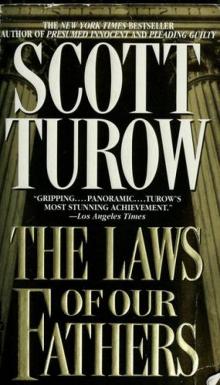 The Laws of Our Fathers
The Laws of Our Fathers Ordinary Heroes
Ordinary Heroes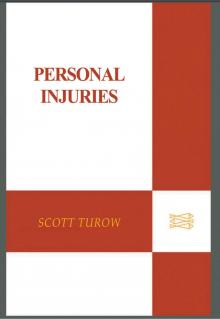 Personal Injuries
Personal Injuries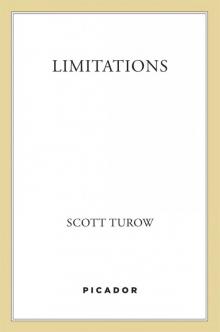 Limitations
Limitations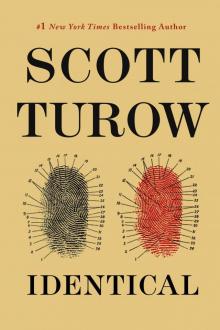 Identical
Identical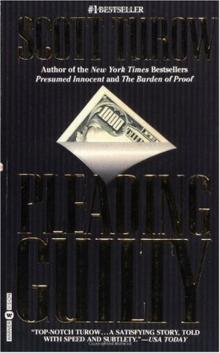 Pleading Guilty
Pleading Guilty Presumed Innocent
Presumed Innocent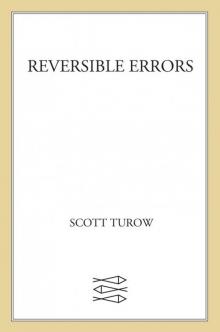 Reversible Errors
Reversible Errors One L: The Turbulent True Story of a First Year at Harvard Law School
One L: The Turbulent True Story of a First Year at Harvard Law School Ultimate Punishment
Ultimate Punishment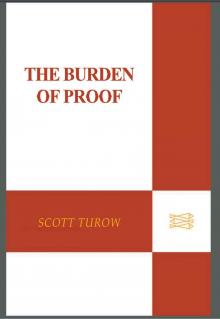 The Burden of Proof
The Burden of Proof Ordinary Heroes (2005)
Ordinary Heroes (2005)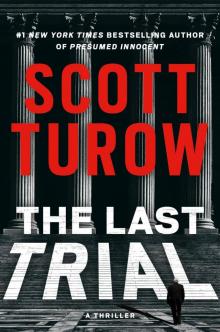 The Last Trial
The Last Trial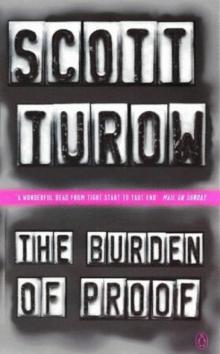 The Burden of Proof kc-2
The Burden of Proof kc-2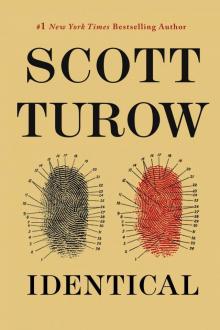 KC09 - Identical
KC09 - Identical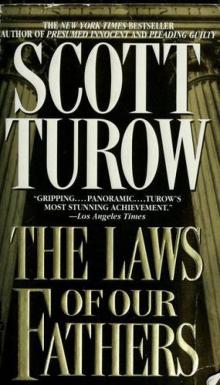 The Laws of our Fathers kc-4
The Laws of our Fathers kc-4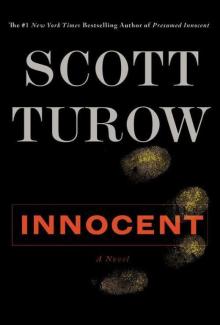 Innocent kc-8
Innocent kc-8 One L
One L Identical kc-9
Identical kc-9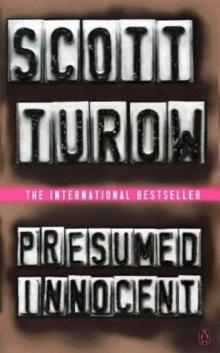 Presumed innocent kc-1
Presumed innocent kc-1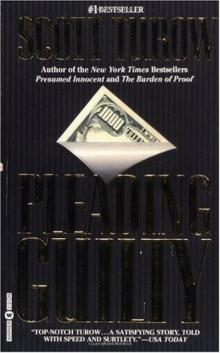 Pleading Guilty kc-3
Pleading Guilty kc-3 One L (1977)
One L (1977)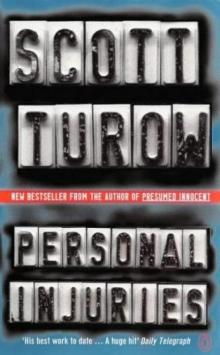 Personal injuries kc-5
Personal injuries kc-5